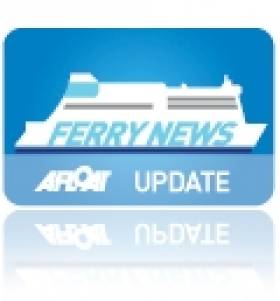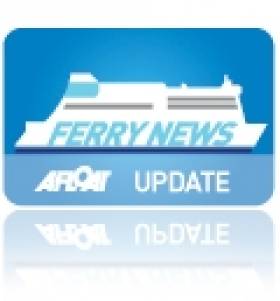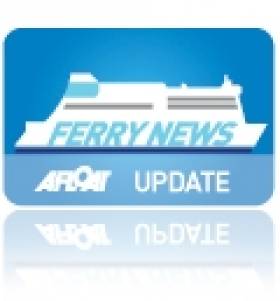Displaying items by tag: Ferry cross the Mersey
Famous Mersey Ferry to be Withdrawn Awaits Uncertain Future
#MerseyFerry- Royal Daffodil, as previously reported on Afloat.ie, is due to be withdrawn from the Mersey Ferries fleet. She is to lay-up at the Duke Street Basin in Birkenhead, from the end of the month on shore power, following dry docking, reports Jehan Ashmore.
The veteran vessel, now in her 51st year, is currently berthed at the nearby Cammell Laird dry-dock facility where a hull inspection is to be carried out by a MCA Surveyor. Her running mates, Royal Iris of the Mersey and Snowdrop, a pair of older sisters, continue to serve routes across the Mersey linking Liverpool to the Wirral Peninsula.
Operator Mersey Ferries claim the reason for the planned reduced fleet, follows declining passengers and significant losses incurred by the company.
According to Mersey Ferries, discussions have been held with the National Waterways Museum, with regards to Royal Daffodil, but no decision has been made as of yet.
World Famous ‘Ferry Cross the Mersey’ Fleet Reduced
#MERSEY FERRY – One of three River Mersey ferries, the 50 year-old Royal Daffodil is to be withdrawn from service in January 2013. The ferry will be laid-up following declining passengers and significant losses incurred by Mersey Ferries (Merseytravel), writes Jehan Ashmore.
Cllr Liam Robinson, Chair of Merseytravel said, "We recognise the place the Ferries hold in Merseyside lore and culture, and that they are an essential part of our heritage. We are committed to keeping them in operation".
He added, "But we also have to recognise that times have changed. Passenger numbers have fallen, to around 650,000 annually, and an operating deficit of £1m per annum cannot be sustained".
As previously reported on Afloat.ie, Royal Daffodil operates 'party' cruises, in which the last such commercial sailing in 2012 was carried out last weekend, followed by a staff Christmas party cruise.
The ferry launched as Overchurch in 1962, is to leave service also due to engine-problems and limited external deck space, which is considered less suitable than her fleetmates serving the cross-river commuter service, particularly at peak times.
The younger 1960 built fleetmates Snowdrop (ex Woodchurch) and Royal Iris of the Mersey, also commissioned for Mersey ferry service, will in 2013 continue operating commuter shuttle services and running Manchester Ship Canal cruises.
Incidentally 'Royal Iris' which under her original name Mountwood, was chartered to serve as a tender for the US Navy aircraft-carrier USS John F. Kennedy while at anchorage off Dun Laoghaire Harbour in 1996. She carried US Navy crew and thousands of visitors back and forth to the harbour's Carlisle Pier, then in its final year as a ferry terminal.
Mersey Ferry to Celebrate The Beatles
#FERRY MUSIC – The famous 'ferry cross the Mersey' service operated by Mersey Ferries, are to run River Shuffle Cruises in honour of the 50th anniversary of The Beatles last performance aboard the Royal Iris.
The special two-hour cruises are part of the Riverboat Shuffle Music Festival (22-30 September) which celebrates Liverpools' most music and culture.
For a list of The Riverboat Shuffle Cruises (and evening performances) see the ferry website. All of the cruises cost £10 and on board there will be a full bar service available as they depart from both sides of the Mersey. For a list of the cruises and sailing times, click HERE.































































